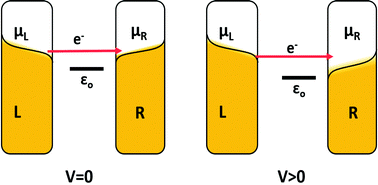A single level tunneling model for molecular junctions: evaluating the simulation methods†
Abstract
A single level tunneling model has been the most popular model system in both experimental and theoretical studies of molecular junctions. We performed a detailed simulation study on the performance of the single level tunneling model for analyzing the charge transport in molecular junctions. Three different modeling methods, including the numerical integration of the Landauer formula and two approximated analytical formulas that are extensively used for extracting key transport parameters, i.e. the energy offset and the coupling strength between molecules and electrodes from current–voltage (I–V) characteristics were compared and evaluated for their applicability. The simulation of I–V plots shows that the applicability of the two approximated analytical models is dependent on the energy offset and coupling strength. Model analysis based on the three methods performed on experimental data obtained from representative literature papers revealed that the two approximated analytical methods are neither suitable for small coupling strength nor suitable for low energy offset, and they also deviated from the exact results at high bias. These results imply that the transport parameters by the model analysis can be wrong if the models were not correctly applied under their intrinsic constraints, therefore providing wrong physical information about the system. We finally provided an applicability map as a guide for different modeling methods for charge transport studies in molecular devices.

- This article is part of the themed collection: PCCP Reviews


 Please wait while we load your content...
Please wait while we load your content...